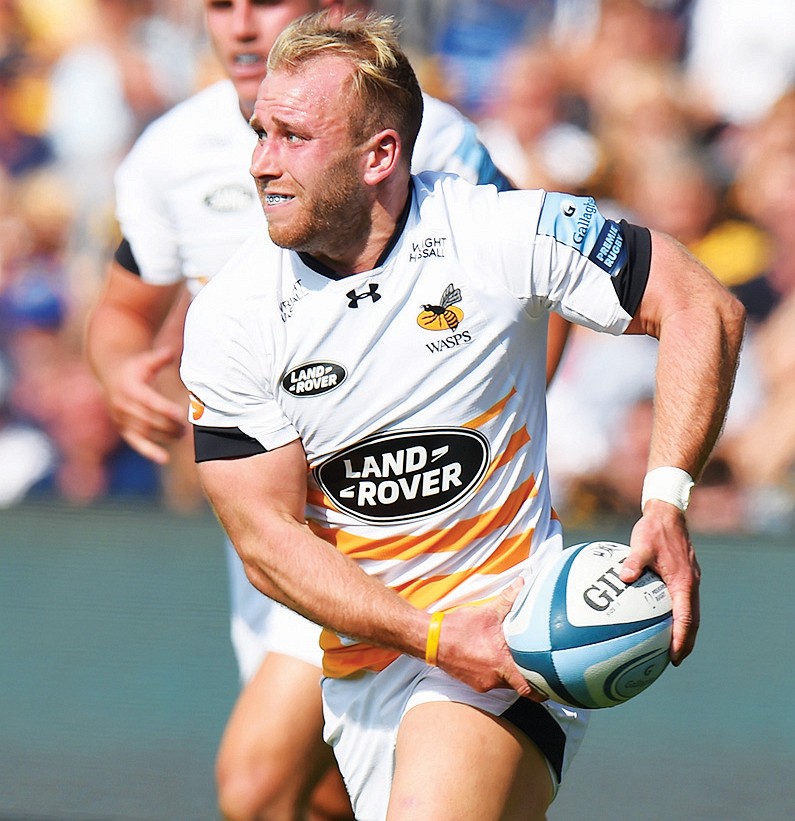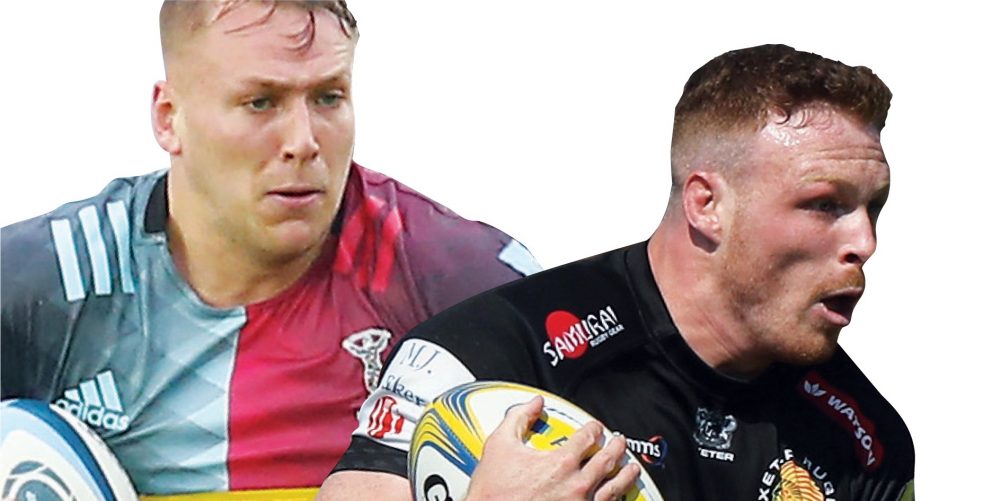ANALYSIS NICK CAIN ON THE CHANGES NECESSARY FOR ENGLA AND AS SIX NATIONS LOOMS






TIME waits for no man – especially not in international Rugby Union – and Eddie Jones has just seven weeks in which to put England back together again. Seven weeks in which to draw the right conclusions from the heavy, dispiriting defeat by South Africa in the World Cup final, and make the necessary repairs before launching a 2020 Grand Slam offensive by beating France in Paris on the opening weekend of the Six Nations.
Those repairs include making good the loss of the highly-rated Aussie attack coach Scott Wisemantel, as well as scrum coach Neal Hatley. Before leaving the England camp to join Bath, Hatley's sign-off was witnessing his scrum platform being taken apart by the Springboks.
Even more importantly, they involve Jones, and his remaining assistant coaches, John Mitchell and the Leicester-bound, Steve Borthwick, picking up a side that had every bit of wind knocked out of it after being slammed in the solar plexus by South Africa.
England have to get back on their feet straight away, especially as they face a France side, which, with new leadership in the form of head coach Fabien Galthie and manager Raphael Ibanez, will want to skin them alive. What better statement of French intent could there be than to start their four-year quest to become World Cup winners on home turf in 2023 by flogging England?
The England players were not the only ones struggling to come up for air after finishing a distant second to the Springboks, despite being favourites to win a second Red Rose world title. The usually loquacious Jones was also winded.
The England coach found it difficult to untangle the tactical wreckage, before finally acknowledging in his recent book that he had made costly selection errors against South Africa by leaving his best scrummaging loose-head, Joe Marler, out of the starting fifteen, and also not moving Owen Farrell to fly-half for George Ford.
Now, with a large cheque from the publishers safely banked, Jones has to get back to earning his daily crust as England's coach on an RFU annual salary estimated £750,000. That is a day rate of just over £2,000, whether or not the squad is in camp (which is barely more than four months a year).
Sorting out thorny issues is what he is paid for, and Jones has plenty to sort out. Whether fly-half becomes a straight shoot-out between Farrell and Ford, bringing an end to Farrell being bumped to inside-centre – where he is not as effective – is at the top of the list.
So is Mako Vunipola's mortgage on the loose-head shirt. If teams like France follow South Africa's example by muscling-up at the scrum, then Marler's stock will rise even further. The same applies to Exeter tight-head Harry Williams, who should have gone to the World Cup ahead of Dan Cole, as should Worcester's Nick Schonert (as advocated in Rugby Paper editions throughout last season).
One of the problems confronting Jones is that there are some players in his camp who talk a good game – however, when it comes to delivering on the pitch, there is often a credibility gap.
“Sorting out thorny issues is what he is paid for, and Eddie Jones has plenty to sort out”
At scrum-half Ben Youngs – who has accumulated 95 caps – has been talking about his aspiration to break the 100-Test barrier in the Six Nations despite being totally outplayed by his South African counterpart, Faf de Klerk, in Yokohama a month ago.
Add to that his less than inspirational form for a poor Leicester side since his return, and there is a strong case against Youngs' immediate international prospectus stretching that far.
Nathan Hughes, the former Wasps No.8 who joined Bristol over the summer, is another who seems to be in need of a reality check. Having made quite an impact as a barnstorming carrier in his first couple of seasons in England, Hughes was injured, and for his last two years at Wasps struggled to regain his early form.
One of the issues has been that when the big Fijian-born back rower is on the sidelines he puts on weight, resulting in a tendency to be short of the peak condition required at international level.
Yet, Hughes described himself recently as feeling “gutted” when he failed to make the England squad for the 2)19 World Cup, describing his non-selection as “a kick in the b*llocks”.
If Hughes had been fighting fit and in barnstorming form, then, with22 caps to his name, he could have made an unassailable case for not only being included in the squad, but also mounting a strong challenge to Billy Vunipola for the No.8 shirt.
However, he did not put himself in the position to do so, and it was no surprise when he lost out to the back row utility Mark Wilson. Now, despite Wilson's injury, Hughes does not have the field to himself, because SamSimmonds has started the season strongly for Exeter, as has the Harlequins tyro Alex Dombrandt.
One of the factors that England lacked at this tournament was the fierce competition in almost every position that characterised Martin Johnson's 2003 world champions.
It is interesting that Billy Vunipo- la and Youngs were cases in point, because both had the comfort blanket of knowing that they were in no danger of losing favour with Jones.
Vunipola was overshadowed in the final by Springbok No.8 Duane Vermeulen to the extent that his world-class credentials took a pounding, and, while big Billy did not play badly over the course of the World Cup, it was notable that he never came close to the command performance he gave for Saracens against Leinster in the European Cup final.
The next big challenge for Jones is to find out which players are capable of bridging the credibility gap so that he gets the Red Rose show back on the road at the Stade de France.
In order to do so convincingly, and in the process make an immediate start on the rebuild that his side require if they are to go one better in the 2023 World Cup than they did in Japan, the England head coach will have to win not just this Six Nations title, but a couple more to boot.
It is a tall order. The nature of the drubbing by South Africa will not be easy to eradicate, mainly because England fell so far short of the standards they aspire to.
An England outfit who have previous form when it comes to faltering when the big prizes are up for grabs has had its confidence shaken – and it is why Jones should not hesitate to breathe new life into his squad by the judicious infusion of new blood, as well as ramping-up the competition for every shirt.
This applies particularly at No.8 HISTORY OF THE WORLD CUP (1975-2015) This illustrated chronicle includes profiles of the star performers over the years including Jonah Lomu, Michael Lynagh, Bryan Habana and Jonny Wilkinson and a selection of the most memorable moments.
Edited by Peter Murray, it features images and details from every World Cup since 1987 to 2015.
BUY WITH THE WOODEN SPOON YEARBOOK FOR FULL COVERAGE OF EVERY RUGBY WORLD CUP. £19.99 (Plus £3.50 P&P) £19.99 (Plus £3.50 P&P) new broom art sweeping and scrum-half, the key hinge positions between the forwards and the backs.
Billy Vunipola deserves the chance to restate his claim against France, but if he fades from view, like he did in the World Cup final, then either Dombrandt, Simmonds or Hughes – if his conditioning is up to scratch – should get the chance to start in the back row alongside Tom Curry and Sam Underhill.
Simmonds at No.8 is problematic in the sense that the whole back row would need a rejig to bring in a tall blindside alongside him, because at 6ft he does not give England an option as either a line-out jumper or lifter. Given the impact that Curry and Underhill made at the World Cup, that rejig seems unlikely.
Dombrandt is the new No.8 on the block, and the Quins 22-year-old looks as if he has got fast-track attributes. Although he is a big unit at 6ft 4ins and 18st 8lbs (118kg), Dombrandt has a mobility and athleticism, and a line-out capability, that makes him more of a traditional No.8 all-rounder than a power player like the 6ft 2ins, 19st 11lb (126kg) Vunipola.
It is still early days for Dombrandt, but he showed he has a head for heights when he played impressively for an uncapped England side against the Barbarians over the summer. He will be in his prime as a back rower when the next World Cup comes around, so blooding him in the Six Nations, rather than waiting for the tour of Japan, makes sense.
It is also time for Jones to make a change at scrum-half. Rugby romantics will want Youngs to become a centenarian, but the reality is that there is not much room for romance in a results-driven pro sport.
Youngs, 30, has had a very good run at international level, winning a Grand Slam in 2016 and further Six Nations titles in 2011 and 2017.
However, this is a watershed, because, having played in three World Cups (2011, 2015, 2019), Youngs will be too old for the next one.
Another critical factor is that over the last two years he has been much more inconsistent than most elite No.9s. Despite playing well in the semi-final victory over New Zealand, the shortfall in his passing and kicking skills, highlighted in these pages by 2003 World Cup scrum-half Kyran Bracken last season, have not been remedied.
Jones has been guilty of dabbling with Ben Spencer and Dan Robson, the two best scrum-halves in the Premiership in recent seasons, rather than giving them a proper run.
So far, at 27, both of them have had bit parts which do not even amount to 80 minutes in total, and the errors in the England coach's two scrumhalf strategy were laid bare during the World Cup.
Flying-in Spencer for the final at the last minute when Willi Heinz was injured meant he was not embedded in the squad, or up to speed with any tactical shifts. As a result, even though Youngs failed to fire against the Springboks, Jones was heavily reliant on him to play almost the entire match.
Heinz did well at the World Cup considering that he won his first cap only a couple of months before the tournament, but he is now 33, and like Youngs he will not be a candidate in 2023. It could be useful to have them as bench back-up during the Six Nations, but any selection has to be done on merit first, rather than on reaching personal milestones.
Otherwise, they can easily become millstones.
Spencer and Robson have served their apprenticeships and have earned the opportunity to show what they can do after being blocked for most of the last four years by the Youngs-Danny Care duopoly, and then gazumped by Heinz.
England have to shape-up fast, and Jones can show his intent by making selections at scrum-half and No.8 which show that he is prepared to put in a new hinge when the old one shows too much wear and tear.
“Dombrandt is the new No.8 on the block, and the 22-year-old has fast-track attributes”



























